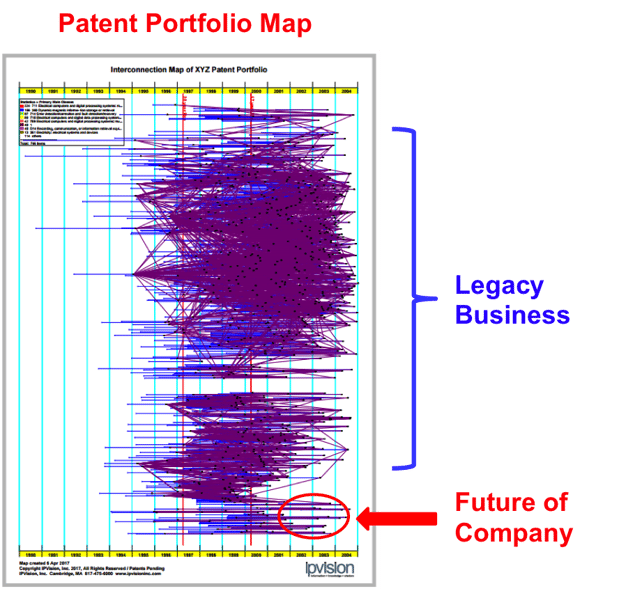 It was a productive meeting, really. The agenda was clear and concise. The presentations were quick and helpful. Everyone thought it went well. Until the CEO said, “What the %$!@?”
It was a productive meeting, really. The agenda was clear and concise. The presentations were quick and helpful. Everyone thought it went well. Until the CEO said, “What the %$!@?”
What was his problem? Why was he so frustrated when everyone else present thought the meeting was one of the best in recent memory? Maybe IPVision has an idea or two.
Getting Things Done
A CEO just wants to get things done. His or her job is to make sure all the moving parts of the business keep moving—and also making money.
Getting things done in life has basically two steps:
- Figuring What To Do
- Actually Doing It
These two steps are hard enough when you’re the only person you’re worried about. When you’re a CEO, however, and in charge of everyone figuring out what to do and actually doing it, trying to innovate at the same time can be frustrating.
Figuring What To Do
This first step is basically what all the courses and books on strategy are about. Strategy usually starts with understanding the outside world, where things currently are, and where things are going. It then considers the core strengths and competencies of the company. With these identified, we move on to questions such as:
- What things can this company/team do to take advantage of the outside trends?
- What do we need to do to survive and prosper in the face of what is happening out there?
Strategy is no easy task. In many cases, intentional or unintentional disruption to all or major parts of an organization can occur. One reason for interrupting your company’s trajectory may be to reinvent the entire company’s value proposition. Perhaps a complete overhaul of your branding and process seems over the top, but you must consider the many industry giants that have fallen throughout the years due to an unwillingness to change and innovate.
You can accelerate this process, saving time and money, if you move intellectual property to the front end of your innovation process. This will give you an unfair competitive advantage you may be missing.
Actually Doing It
Now, let’s focus on the second step: Actually Doing It. This is more widely known in business-speak as “execution.” Implementing strategy requires formulating a clear statement of what the strategy is and making sure everyone understands. If you attended business school, you probably remember the exercise where eight people line up and the first person whispers something in the ear of the second person, who whispers in the ear of the third. By the time message, which was usually something very simple, gets to the eighth person, it is not at all what was said at the beginning of the line. Imagine the opportunities for disaster if the message is complex.
So, Actually Doing It involves communication, but it also may require reconfiguring some parts of the organization. When I was a business school student, I took a course called “Organizational Planning and Management.” The title seemed a bit boring, but it was really about organizational structure and compensation systems. These are two powerful levers in the struggle to execute.
Now, let’s consider a real life example that illustrates this.
The Founder/CEO of a company in the computer/networking industry had taken the company he co-founded and driven it into a public company with multiple billion-dollar revenues. They made hardware and were very profitable. They had an impressive patent portfolio that helped protect product margins while creating barriers to competition.
Being an entrepreneur, this founder resonated with Andy Groves’ “Only the Paranoid Survive” thesis. The CEO figured the hardware that propelled the company was going to become increasingly commoditized, but he also recognized that he could use his position as a dominant player in the space to layer value-add software and analytics on top of the hardware to create more value for the customer that his company could capture. So far, so good.
He tested this strategy concept with his management team, and they eventually bought into it. He started communicating it to Wall Street and got some consistent buzz in return. The management team made some organizational changes and put in place some new innovation processes around the strategy. Following disruptive innovation practice, management had set up a separate smaller, more agile software group to implement the new strategy. Again—so far, so good.
So, where is the problem? His management team did not really pay any attention to the intellectual property side of the house. The IP was run, as is typical in most companies, by the lawyers, who are quite skilled at the law but not so skilled at management. While the CEO was touting the new strategy to Wall Street, the invention disclosure and patenting processes of the legacy hardware business, which was still generating the bulk of the revenue and profits of the company, kept rolling along.
As in many companies, there was a compensation plan that paid engineers for every invention disclosure they made. They received additional compensation if the invention disclosure turned into a patent application and even more cash if the patent issued. Since most of the engineers were hardware people, the invention disclosures were…hardware inventions. See, compensation systems do work as I learned in business school.
A fundamental problem was that the legal function was well meshed with the legacy hardware group but was not set up to deal with the more agile software group. This was in part because the lawyers were trained in the technologies and law relating the “hardware side of the house”.
So, why was the CEO frustrated? His new strategy had been launched for a couple of years before he asked IPVision to help him understand what competitors and innovative startup and growth companies were doing on the software side of things. He knew pretty much everything on the hardware side, because he had grown his startup into a dominant position. Being a smart guy, he also knew what he didn’t know, and that was the software side.
The IPVision Difference
IPVision’s first step in this situation was to understand what the company’s IP position looks like. We created the following Patent Portfolio Interconnection Map showing the company’s patents and the citation relationships among them.

Toward the top of the map are large patent citations with patents citing each other, as inventors “build” on earlier work. Toward the bottom are less clustered patents. Usually the new technologies appear here because they do not connect with the legacy part of the portfolio. This was the first time the CEO had ever seen his portfolio. He proceeded to declare that the stuff at the bottom were minor things, like power supplies, and the citation cluster toward the top was the new stuff he was touting to Wall Street. He was wrong.
Then came the embarrassing moment when his Chief Patent Counsel blurted out that, no, the few patents at the bottom were the only patents related to the new stuff. That’s were the CEO said “What the %$?@? This is the future of the company, why aren’t we securing it, and why are we still cranking out patents on the old stuff?”
The answer: Actually Doing It is hard
The CEO assumed that everyone was on board, including the patent people. But their organizational structure and reward systems were designed around the old stuff, so that is what they did. Because management had always deferred to the patent people, they weren’t really managing at all.
So, what happened next? Because the CEO now had visibility into the patent position using IPVision maps and analyses, he restructured the patent processes and rewards to align them with the strategy. Unfortunately, in the couple of years between the announcement of the strategy and his discovery of the “hole” in his patent portfolio, several more agile new companies had claimed part of the landscape. Perhaps I shouldn’t say “unfortunately,” because through IPVision’s work the CEO decided to acquire a number of those companies over the next several years, gaining a patent position and talent that accelerated the implementation of his strategy.
Not every story has such a happy ending. Are you or your CEO frustrated, too? Is it time to talk to IPVision? Give us a call, so we can help you achieve your happy ending, too.



